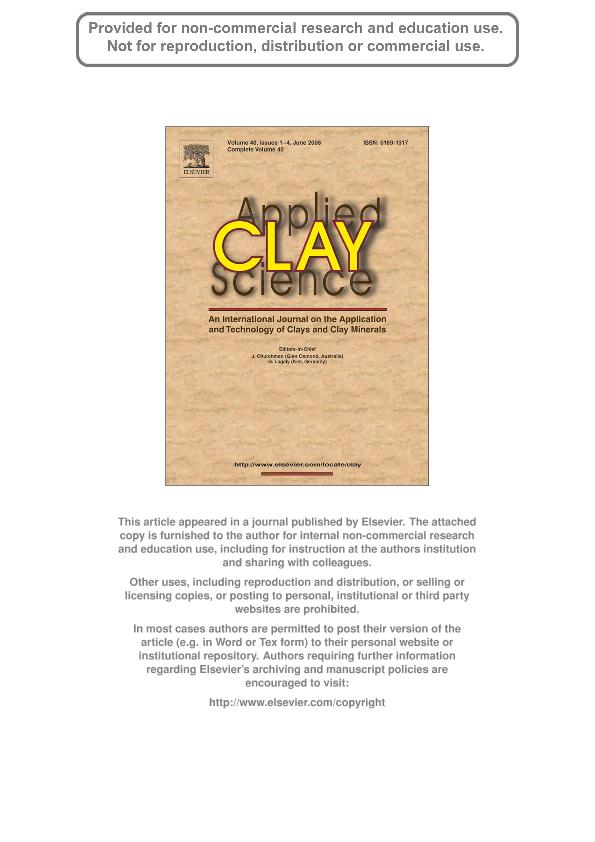Artículo
The geology and mineralogy of a range of kaolins from the Santa Cruz and Chubut Provinces, Patagonia (Argentina)
Fecha de publicación:
06/2008
Editorial:
Elsevier Science
Revista:
Applied Clay Science
ISSN:
0169-1317
Idioma:
Inglés
Tipo de recurso:
Artículo publicado
Clasificación temática:
Resumen
In the Santa Cruz and Chubut provinces, Patagonia, Argentina, kaolin deposits were formed by "in situ" alteration of volcaniclastic rocks, such as the Bajo Grande, Chon Aike or Marifil Formations, or by erosion, transportation, and deposition of residual clays in small basins. This paper describes the genesis; geology; mineralogy; major, minor, and trace element geochemistry; grain size distribution; and specific surface area of natural and washed kaolins in an attempt to understand their behavior in the ceramic process. The sedimentary clays of the Baqueró Fm Lower Member, related to the Bajo Grande basement, are kaolinitic-smectitic, very fine-grained, and with a very high specific surface area. The clays related to the Chon Aike or Marifil Fms are kaolinitic, showing intermediate values of specific surface area and a coarser particle size distribution, associated with quite a fine-grained texture. The Baqueró Fm Upper Member received a considerable pyroclastic supply, fostering the development of a fine-grained clay in which kaolinite (± halloysite) with higher values of kaolinite crystal order prevailed. Primary kaolins - derived from weathering of pyroclastic sequences of Chon Aike and Marifil Fms - are coarse-grained, composed of kaolinite + quartz ± halloysite and exhibit a very low specific surface area. Alteration of mostly crystalline pyroclastics yielded ordered kaolinite and illite (+ halloysite) with a fine particle size distribution and intermediate values of specific surface area. Alteration of mainly vitreous pyroclastics produced halloysite (+ kaolinite) with a fine-grained texture and moderately high values of specific surface area. A supergene origin of primary kaolins is inferred on the basis of palaeoclimatic and geochemical evidence that corroborates stable isotopic data. The mineralogy, grain size, and textural characteristics of clays are controlled by parent rock composition (primary kaolins) or by provenance and proximity to source areas (sedimentary kaolins).
Archivos asociados
Licencia
Identificadores
Colecciones
Articulos(INGEOSUR)
Articulos de INST.GEOLOGICO DEL SUR
Articulos de INST.GEOLOGICO DEL SUR
Citación
Dominguez, Eduardo Alejandro; Iglesias, Claudio; Dondi, Michelle; The geology and mineralogy of a range of kaolins from the Santa Cruz and Chubut Provinces, Patagonia (Argentina); Elsevier Science; Applied Clay Science; 40; 1-4; 6-2008; 124-142
Compartir
Altmétricas




